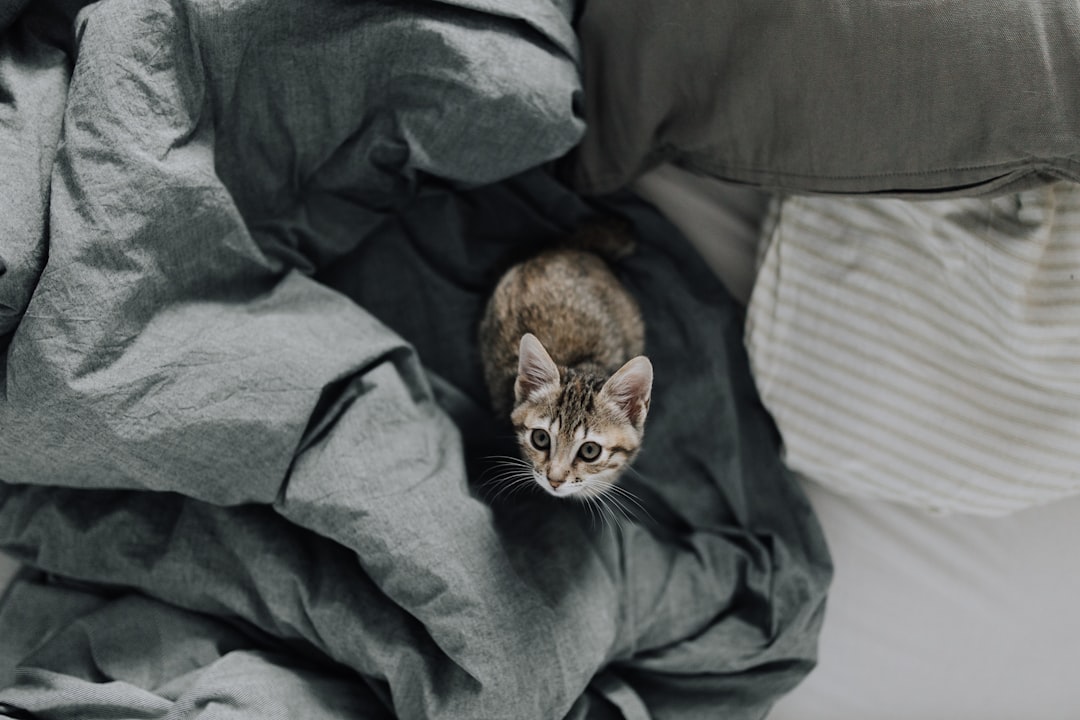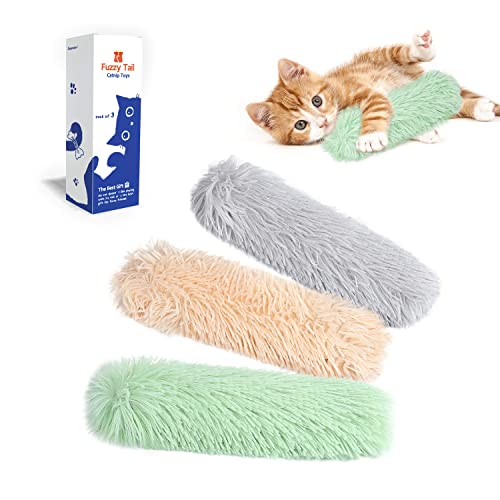Siamese cats have a unique personality and behavior that can make them great indoor companions. But, can they be happy living strictly indoors? In this comprehensive guide, we explore everything you need to know about keeping Siamese cats as indoor house cats – from creating a comfortable environment to ensuring optimal health and nutrition. If you’re a cat enthusiast or thinking of adopting a Siamese cat, read on to discover all the insider secrets of keeping your feline friend happy, healthy, and entertained indoors!

Getting to Know Siamese Cats: Personality and Behavior
Siamese cats are a unique and fascinating breed, known for their distinctive appearance and lively personalities. These feline friends are a popular choice for indoor house cats, but before bringing a Siamese cat into your home, it’s essential to understand their personality and behavior.
Siamese cats are highly intelligent and curious creatures, with a strong desire for social interaction and attention from their human companions. They are known for being talkative, vocalizing frequently and often in unique ways that sound like human speech. Siamese cats are also very affectionate, often enjoying being close to their owners and seeking out warm laps to snuggle in.
As with any feline species, Siamese cats have their unique quirks and personality traits. They are known for being very vocal and demanding, with a strong desire for attention and affection from their humans. Siamese cats are also very active and playful, liking to explore their surroundings and engage in playful antics.
Siamese cats are not particularly clingy or needy, but they do appreciate social interaction and companionship from their owners. They are also known for being quite independent, often thoroughly enjoying their alone time, but this does not mean they can be left alone for long periods.
As with any animal, Siamese cats may exhibit undesirable behaviors if they are bored or do not receive enough attention from their human companions. This breed is known for being prone to anxiety and depression if they do not receive enough stimulation, social interaction, and mental exercise.
If you’re considering adopting a Siamese cat, it’s essential to understand the personality and behavior tendencies of this feline friend. By providing enough mental stimulation, social interaction, and affection, you can ensure that your Siamese cat thrives in their indoor house cat lifestyle.
Creating a Safe and Comfortable Indoor Environment for Siamese Cats
Creating a safe and comfortable environment is key to keeping your Siamese cat as an indoor house cat. Indoor cats spend most of their time inside the house, so it’s important to make sure they have everything they need to live happy and healthy lives.
Firstly, it’s important to provide your Siamese cat with a designated space where they can feel relaxed and comfortable. Cats love to have their own territory, so ensure they have a cozy bed, blankets, and pillows arranged in a quiet corner of the room. This not only provides your feline friend with a sense of security, but also helps them to relax and de-stress.
In addition, cat towers, scratchers, and toys are great ways to keep your Siamese cat busy and active. Make sure to choose high-quality items that cater to your cat’s specific interests and personality. Building a cat-friendly environment that encourages play and exploration can also prevent unwanted behaviors, such as clawing furniture or excessive meowing.
Ensuring fresh, clean water is readily available is also important for your Siamese cat’s health. Cats are known for being particular drinkers, so providing a fresh stream of water in a fountain, or providing multiple water bowls around the house, can help encourage hydration. In addition, make sure your cat’s litter box is clean and easily accessible. Siamese cats are generally fastidious about their toilet habits, and if not properly maintained, they might start finding other spots around the house to do their business.
It’s important to take into consideration your Siamese cat’s safety when creating their indoor environment. Make sure that there are no toxic plants or substances within reach, and that windows and balcony doors are securely screened. Cats love climbing and exploring, so it’s important to make sure your home is safe for your furry friend to roam around in.
Siamese cats are known to be social and affectionate animals, so don’t forget to spend some quality playtime as well as some grooming time with them. Brushing their fur and providing a scratching post or pad can also help keep their claws healthy and prevent furniture damage.
In summary, creating a safe and comfortable indoor environment for your Siamese cat involves providing them with a designated space, high-quality toys, clean water, and easy access to their litter box. Taking into account their safety concerns, such as ensuring a non-toxic environment and securely screened windows, is also important. Ultimately, providing your Siamese cat with a comfortable and interesting indoor environment helps ensure a happy and healthy feline friend.
Feeding Siamese Cats for Optimal Health and Nutrition
Siamese cats require a nutritionally-balanced diet in order to stay healthy and thrive as indoor house cats. Pet owners should always consult with a veterinarian before deciding on the best dietary plan for their pet, as each cat’s nutritional needs may vary based on their age, health status, and activity level.
Here are some tips and guidelines to keep in mind while feeding Siamese cats:
-
Choose High-Quality Cat Food –
When selecting cat food, it is crucial to read the label and check the ingredients list. Opt for cat foods that list real meat as the first ingredient. Avoid cat foods that contain fillers, by-products, or artificial preservatives and flavors. This will ensure that Siamese cats receive adequate nutrition without any harmful additives. -
Provide Fresh and Clean Water –
Clean and freshwater should be always available for Siamese cats. Water bowls should be sanitized and refilled regularly to prevent harmful bacteria growth. Some cats may prefer a running water source, so investing in a water fountain may be a good idea. -
Portion Control –
It’s important to measure food portions to avoid overfeeding and prevent obesity, which can lead to health issues. A general rule of thumb is to provide 4-6 ounces of wet food or ¼ – ½ cup of dry food per day, depending on the cat’s size, weight, and activity level. -
Treats in Moderation –
While snacks and treats can be a good way to reward and bond with your cat, it’s important to limit the intake to avoid excess calorie intake. Treats should not exceed 10% of the cat’s daily diet. -
Keep Diet Consistent –
Cats need consistency in their diets to maintain good health, so avoid switching foods too frequently. If changing food is essential, introduce the new food gradually to avoid digestive issues.
By providing a well-balanced diet and monitoring servings for quality and quantity, indoor house cats such as Siamese cats will have the necessary nutrients for a healthy and balanced life.
Ensuring Adequate Exercise and Mental Stimulation for Siamese Cats
One of the keys to keeping a Siamese cat happy and well-behaved as an indoor house cat is to provide them with enough exercise and mental stimulation. Siamese cats are known for being playful and energetic, so ensuring they get enough physical and mental activity is essential for their well-being. Here are some tips to keep your Siamese cat active and entertained:
-
Provide Toys: Siamese cats love to play, so having plenty of toys available is a must. Some good options include interactive toys, such as puzzle feeders or balls with bells inside, or a laser pointer that you can use to play with your cat. Be sure to rotate toys regularly so that your cat doesn’t get bored.
-
Set Up a Play Space: Siamese cats enjoy having a play area that’s all their own. Pick a room or corner of your home that can be dedicated to your cat’s playtime. Add a scratching post, a cat tree, and some toys to make the space more inviting.
-
Use Food Dispensing Toys: Another way to keep your Siamese cat active and engaged is to use food dispensing toys. These toys allow your cat to work for their food, which is mentally stimulating and can help prevent overeating.
-
Encourage Climbing: Siamese cats love to climb, so make sure they have somewhere to do it. If you don’t have a cat tree, consider adding perches or shelves to your walls to give your cat more vertical space to explore.
-
Play with Your Cat: Spending time playing with your Siamese cat is not only fun but is also an effective way to ensure they get enough exercise. Try to set aside a few minutes each day to engage in playtime with your cat. This could include playing with a wand toy or cuddle time with a favorite stuffed animal.
By following these tips, you can be sure that your Siamese cat is getting the exercise and mental stimulation they need to stay healthy and happy as an indoor house cat. Keep in mind that every cat is unique and may have different preferences, so don’t be afraid to experiment with different toys and activities to see what your cat likes best.
Training and Socializing Siamese Cats: Tips and Strategies
Once you have brought a Siamese cat into your home, it is essential to provide them with proper training and socialization. This not only helps in building a strong bond between you and your feline friend but also aids in mitigating any behavioral issues in the future.
Here are some tips and strategies for training and socializing your Siamese cat:
- Use Positive Reinforcement
Siamese cats are intelligent and sensitive animals that will respond well to positive reinforcement. Use treats, verbal praise, and affection to reward good behavior and never use physical punishment.
- Litter Box Training
Litter box training is crucial for indoor cats like Siamese cats. Place the litter box in a quiet, easily accessible area and make sure to keep it clean. Use a litter box with low sides so that the cat can easily get in and out. Show your cat where the litter box is and gently place them in it after meals or when you notice them sniffing around.
- Scratching Post Training
Cats have a natural instinct to scratch, and it is essential to provide them with an appropriate target instead of your furniture. Place a scratching post near your cat’s favorite spot and encourage them to use it with treats and positive reinforcement.
- Leash Training
Leash training is a great way to provide your cat with exercise and mental stimulation. Use a harness instead of a collar and train your cat to walk on a lead in a safe and secure area. Start gradually by allowing them to explore their surroundings while on the lead, and increase the time and distance as they become more comfortable.
- Socialization
Siamese cats are sociable animals and thrive on human and feline companionship. Encourage your cat to interact with other cats and provide them with plenty of opportunities to play and explore. If you have multiple cats, make sure to provide each one with their own food, water, and litter box to prevent territorial issues.
In conclusion, proper training and socialization are key to ensuring that your Siamese cat leads a happy and healthy life. Use positive reinforcement, be patient, and always remember to enjoy the journey of building a strong bond with your feline friend.
Preventing and Managing Common Health Issues in Siamese Cats
Among the many benefits of owning a Siamese cat is having a furry companion with minimal health problems. However, you can still encounter common health issues in your feline friend. Here are some tips on preventing and managing such issues:
-
Dental Problems
Dental issues can be a significant challenge for cats. Without proper hygiene, your Siamese cat may develop gum disease, periodontitis, or tooth decay. Regular dental check-ups and cleanings are essential, along with daily teeth brushing. Adopt a cat-friendly toothbrush and toothpaste and start brushing your feline’s teeth at an early age. -
Obesity
Weight issues are common in indoor cats, who are less likely to engage in physical activities. Siamese cats are intelligent and playful, so keep them entertained with interactive toys to prevent obesity. Feed them dry or wet food with low calorie and fat content. Avoid free-feeding and stick to a regular feeding schedule. -
Urinary Tract Infections
Siamese cats are prone to urinary tract infections (UTIs) due to their unique physiology. UTIs occur when bacteria enters and inflames the bladder walls. If you notice your cat struggling to urinate, licking its urinary area excessively, or urinating outside the litter box, it’s time for a vet checkup. Prevent future UTIs by providing fresh drinking water, maintaining litter box hygiene, and serving low-magnesium cat food. -
Eye Problems
Siamese cats are prone to progressive retinal atrophy, which results in progressive blindness. They can also get tear staining on their fur due to overactive tear ducts, seasonal allergies, or blocked tear ducts. Wipe your cat’s eyes regularly, and take them for checkups as recommended by your vet. -
Respiratory Infections
Siamese cats are susceptible to upper respiratory infections due to their brachycephalic (flat-faced) features, which may cause breathing difficulties. Monitor your cat’s breathing and visit the vet if they have difficulty breathing, coughing, sneezing, or wheezing. Your vet may recommend antibiotics or antivirals depending on the severity of the infection.
By following these tips, you can prevent and manage common health issues in your Siamese cat. Regular vet check-ups, balanced nutrition, exercise, mental stimulation, and proper hygiene go a long way in ensuring that your cat stays healthy and happy.














